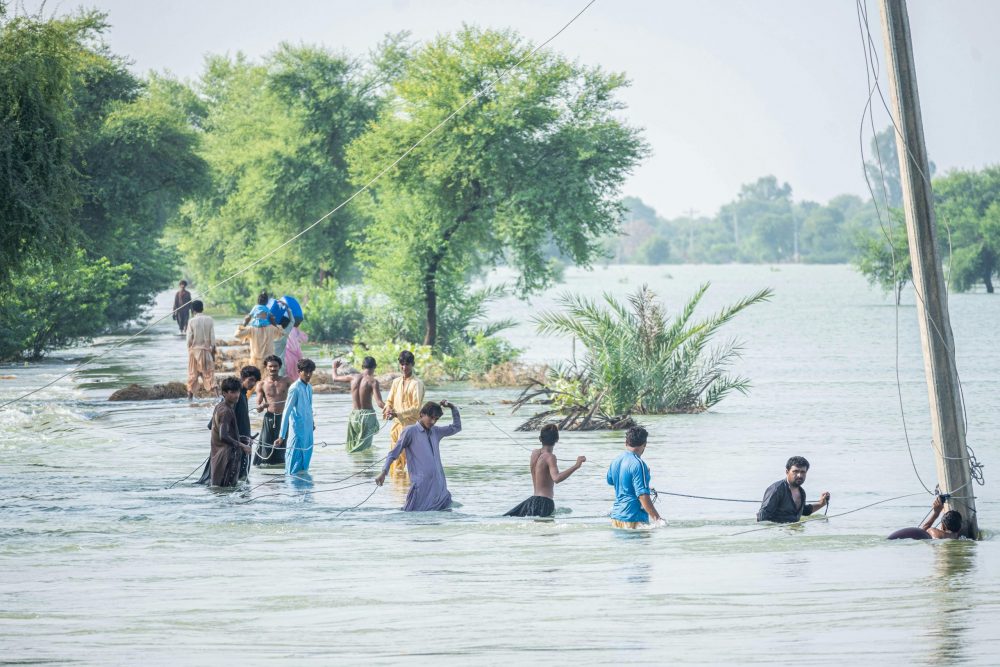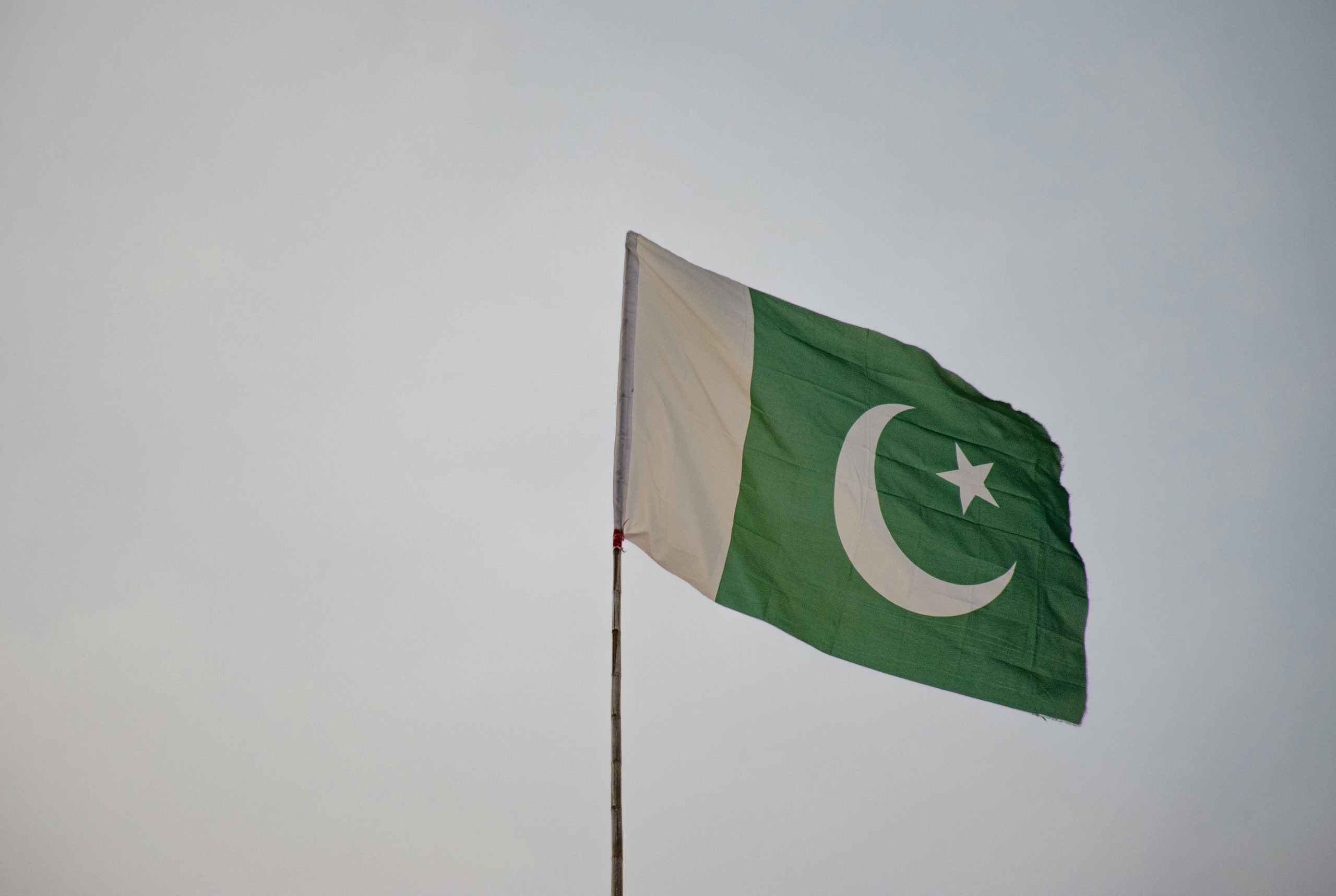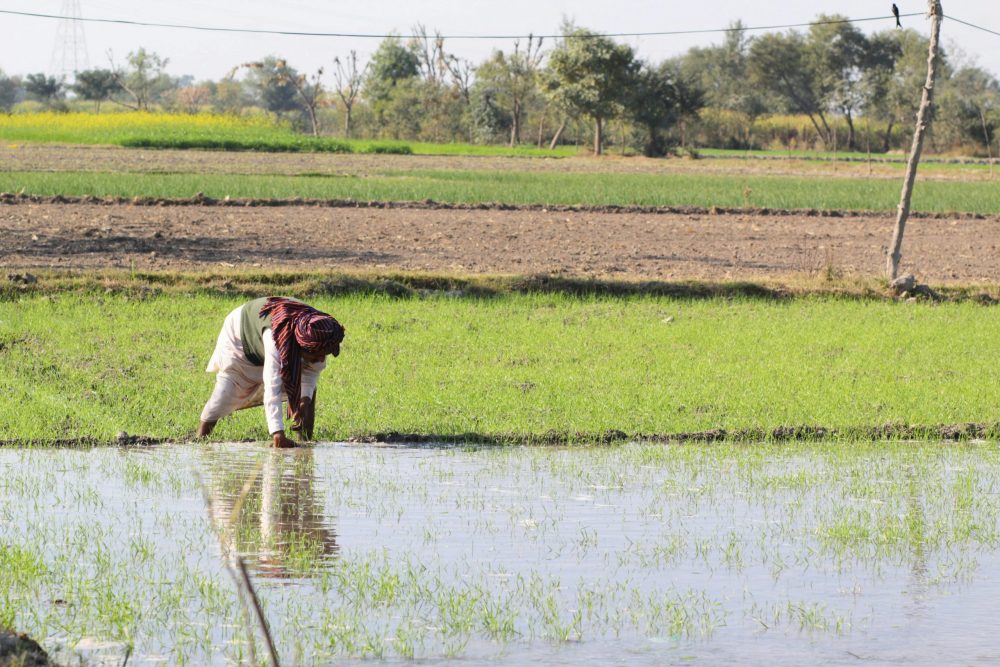The scenes in Lahore look eerily similar to those of a sci-fi dystopian movie. A grey haze has descended upon the city. Lahoris walk around wearing protective face masks – not because of Covid-19 – this time, it is the smog which poses a serious health risk to the people of the city.
A worrying trend is in play in Lahore for the past few years. As the winter months approach, the city is wrapped in dense, unbreathable smog. The city frequently features in the list of cities with the worst air quality in the world, often topping the list during the winter months. This constantly deteriorating air quality poses a severe health risk to Lahoris who are exposed to the polluted air containing particulate matter 2.5 (PM2.5), which are fine particles less than three percent the diameter of a strand of human hair, easily absorbable within the bloodstream and gravely risking health. A study conducted by Sanval Nasim (LUMS) and Faiza Sharif (GCU) highlighted that PM2.5 exposure increases the incidences of cancer and cardiovascular and respiratory diseases such as ischemia, myocardial infraction, asthma, and bronchitis. A separate study conducted by Sanval Nasim and Mahnoor Kashif highlighted the impacts poor air quality has on the financial sector when impaired cognitive ability and mood changes due to exposure to polluted air affects investor behavior and can drive substantial variation in returns on the stock market.
So, while there is evidence of increased health and economic risks associated with poor air quality, why is it that Lahore and other cities of Pakistan continue to face this issue year in year out and why have government actions been ineffective in dealing with it?
Sources of Air Pollution
Presently, there is a lack of research on source appropriation for the existing poor air quality. However, one study carried out by the Food and Agriculture Organization (FAO) in 2018 highlighted broadly the main polluting sectors to be transport (43% of total share in emissions), industry (25%), agriculture (20%), and power (12%).
Poor fuel quality and older automobiles with inefficient engines are leading sources of vehicular emissions. Annual rice stubble burning season which begins around the October-November period in Punjab is another leading source of smog as farmers across the province begin to prepare the crop fields for planting of wheat.
While we may be able to pinpoint the sources which contribute to poor air quality in Lahore and Punjab in general, there also needs to be an acknowledgement on the behalf of the government that its regulatory policies against these emission sources have been negligible and toothless in producing any tangible change.
Lack of Policy Implementation
A closer look at the existing policy to tackle smog and poor air quality will reveal that this issue is not one of lack of legislation or laws, rather a failure of governance. Detailed policy measures exist at both federal and provincial levels, but due to poor implementation the problem still persists. The mandate to control the various causes of air pollution fall under different departments, and bringing the relevant departments together to devise and coordinate a cohesive anti-pollution strategy is a major challenge. This inter-departmental lag contributes to regulatory deficiencies.
In the face of such failures, the air pollution crisis has been declared an emergency and the Provincial Disaster Management Authority (PDMA) has been forced to step in as a coordination department.
A case in point of this inefficient implementation is the Punjab government’s initiative to equip older brick kilns with modern zig-zag technology to reduce emissions. Converting brick kilns with modern technology across the province was no easy feat, as there were many non-conforming kilns which had to be severely fined to force them to adopt the new technology. Additionally, lack of technically adept and skilled labour has also been a deterrent in the adoption of zig-zag technology. There is also the issue of incorrect categorization since brick kilns continue to be categorized as part of the cottage industry, which means that they are exempt from the policies and regulations pertaining to large scale industries, making it difficult to regulate them and encourage them to conform to modern technologies.
Vehicular emissions which are a major contributor to poor air quality need tighter controls too. The government has requested oil marketing companies to import Euro 5 fuel which is significantly cleaner and reduces emissions compared to the more widely available Euro 2. However, there has not been a revision of the fuel standards set by the Environmental Protection Agency (EPA). The 2016 fuel standards set by the EPA which were developed around Euro 2 need to be revised to Euro 5, so the discrepancy between word, letter and spirit is diminished.
State Responsibility
The burden and responsibility essentially lie with the state in this regard. The sectors that are responsible for their share of air pollution will almost always try to mitigate their costs rather than to reduce emissions, while the citizenry and civil society can, at most, serve supporting roles to create pressure for improved regulations. It is the government itself that needs to spearhead the required initiatives. There are examples which demonstrate lack of prioritization by the government such as when the Pakistan Environment Protection Agency (PEPA) mandated that the Pakistan Environment Protection Council (PEPC) convene at least twice a year, yet failed to do so in the past many years.
On paper Pakistan has excellent environment related legislations, but failure in implementation and lack of resource capacity does not allow effectively achieving the goals set by them. In an attempt to devolve powers to the provincial governments, the bureaucratic lag has been exacerbated where multiple departments have overlapping or cross-cutting jurisdictions which leads to inefficient execution of laws and regulations. Consequently, there is little accountability of which department is to be held responsible when regulations are violated.
There is a dire need to break this cycle of bureaucratic futility by redefining the mandates and jurisdictions of each department and how they may interact and support each other in effective implementation of laws.
Way Forward for Future Policy Actions
The Punjab Government in October 2021 declared smog a calamity and instructed the PDMA to take action against crop burning in the province to reduce emissions. The government also shifted all schools and private offices to remote work on Mondays till January 15, 2022 in hopes that the number of vehicles on the road will reduce. But again, these measures are neither sufficient nor appropriate to curb emissions in the province. The government must realize now that addressing crisis situations should not warrant a knee-jerk reaction such as closing down schools, rather it should have effective laws and regulations in place with a robust implementation mechanism.
Revision of Devolution of Powers – Empowering Local Bodies over Departments
Admittingly, there is considerable devolution of powers from the federal to provincial levels in the air quality policy landscape. The provincial governments have departments which in turn work with the district level administrators to ensure that rules and regulations are abided by. However, due to overlapping jurisdictions, contributors to air pollution and violators of environmental laws are able to escape fines which is why there is an imperative need for a local government structure that can take on a more hands-on approach in curbing emissions and clamping down on violators.
Comprehensive Automobile Legislation
Much of the data points to automobiles as a major contributor of emissions and pollution. As previously pointed out there is existing regulation of shifting to cleaner Euro-5 fuels across the country but that is only part of the solution. The preponderance of old vehicles with inefficient engines is equally responsible for emissions which is why the automobile legislation should focus on effective motor vehicle testing regime and a plan to phase out old/polluting vehicles. This can be done through incentivizing car manufacturers and banks in aiding citizens to finance new vehicles in place of their older vehicles.
Additionally, there should be a focus on public transport legislation whereby incentives are provided to citizens and organizations to take up public over private transport. To this end, the focus of the government should be large private companies and major emitters to shift all their employees to public transport.
The electric vehicle policy introduced in 2019 shows the government’s strategy for overhauling transport in the country in the coming years. However, this will only be successful when recharging stations become ubiquitous across the country, which is why oil marketing companies will also need to start incorporating electric vehicle charging ports at their fuel stations all over Pakistan.
Urban Policy and Design
The air quality crisis also needs to be viewed in the larger context of urban planning and land-use. There is a need to influence policy/decision making to consider environmental factors as part of the planning process. Pakistan requires a very solid, integrated green and sustainable urbanisation plan for the country which can then be filtered down to the provinces. It continues to allow cities to grow and central business districts develop without proper zoning strategies and without keeping in mind the ecological footprint of such development. Zoning regulations should clearly separate industrial areas from residential areas; business centers should be moved into SEZs.
The automobile policy is closely tied in with urban policy and currently, planning is personal transport/car-centric with no regard for environmental consequences. Promotion of public transportation, facilitating non-motorized transport, and imposing land use related costs for use of personal transport have to be factored into urban planning.
It is evident that tackling the smog and air quality crisis requires a holistic approach which combines effective legislation and stringent implementation protocols. At the same time there needs to be a realization on part of the government that the make-shift policy measures to tackle emergency situations is a regressive way of governance and that it ought to invest in strengthening its response system via a strong local body set up.
Sheheryar Khan is a Communications Assistant at the Consortium for Development Policy Research
This article is based on the discussion from a workshop organized by CDPR on Lahore’s air quality and the IGC report “Charting Pakistan’s Air Quality Policy Landscape“.





